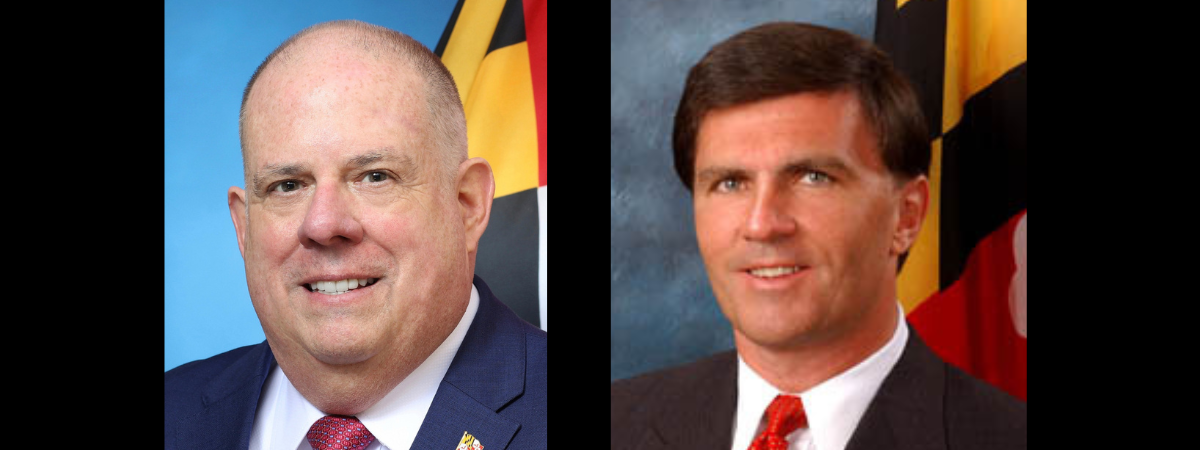Banned Book Summer Reading List

All American Boys (2015) by Jason Reynolds and Brendan Kiely is a Young Adult (YA) novel about two high school students, Rashad, who is Black, and Quinn, who is White. Rashad is wrongfully accused of shoplifting potato chips and attacking a woman. A White police officer immediately takes Rashad out to the sidewalk and beats the boy without any questioning. Bleeding internally, Rashad goes by ambulance to the hospital.
Quinn witnesses the beating and quickly leaves the scene. He is torn by witnessing a violent injustice and knowing the offending police officer. This officer has mentored Quinn since his father died in Afghanistan. A video of the beating goes viral and divides the students in the school.
Quinn attends a protest with Rashad’s family and others. At the police station, the demonstrators lie on the ground in a “die in.” Rashad and Quinn, together at the protest, look at each other, suggesting a good relationship in the future.
Objections to the book cite the portrayal of racial profiling, of police violence, and of foul language.
All Boys Aren’t Blue (2020) is a YA memoir about growing up Black and queer. In it, LGBTQ+ activist George M. Johnson writes about being bullied, deals with issues of consent, agency, and sexual abuse, and depicts a sexual encounter and statutory rape. Johnson says young people need stories of their lived experiences and identity struggles.
In 2021, All Boys Aren’t Blue was named to the Teen Top 10 Titles by the Young Adult Library Services Association; the list is a “teen choice” list. This book is also No. 3 on the American Library Association’s Top 10 Most Challenged Books of 2021. The book has been removed from schools in at least 15 states because of its LGBTQ+ themes and profanity, and because it is considered sexually explicit.
Between the World and Me (2015) by Ta-Nehisi Coates is a semi-autobiographical letter to his teenage son about the realities of being Black in the United States. He looks at American history through the lens of how racist violence and White supremacy are woven into the social fabric of the United States. His book was inspired by James Baldwin’s 1963 epistolary novel, The Fire Next Time. The title is from a poem by Richard Wright. The author shows no optimism with regard the overcoming White supremacy.
This book won the National Book Award in 2015, and it remained at the top of the New York Times bestseller list for nonfiction for three weeks that year. Many colleges and universities have it as their common reading for first-year students. After complaints, however, some local school districts have nixed it for classroom instruction as being racist and anti-police.
Gender Queer (2019) by Maia Kobabe is a graphic memoir about coming of age and exploring gender identity. Kobabe passes through stages of anxiety and confusion while trying to establish an identity. At one point, Kobabe writes, “I don’t want to be a girl. I don’t want to be a boy, either. I just want to be myself.”
Critics label the book unsuitable for young people because it depicts a man touching a youth’s penis as well as oral sex and masturbation. A South Carolina governor called the memoir “sexually explicit” and “pornographic.” A Virginia judge ruled that parental permission must be granted before students may read the book. The ALA labeled it the most challenged book of 2021. School libraries in Florida, North Carolina, and New York have removed the book from circulation.
Heather Has Two Mommies (1989), by Lesléa Newman, is an early children’s book about life with lesbian parents. The ALA ranked it the ninth most frequently challenged book in the U.S. in the 1990s. It was criticized by people opposed to same-sex marriage and by some LGBTQ+ individuals who thought the portrayal wasn’t acceptable. However, the book also received high praise for highlighting lesbian parents.
Heather’s parents are her biological mother, who gave birth after artificial insemination, and her biological mother’s same-sex partner. At playgroup, Heather is upset when she finds out that many of the other children have a daddy and she does not. One child has two daddies. The caretaker of the playgroup makes sure the children understand that all families are special and no family type is better than any of the others. By the end of the book, Heather is no longer sad and she expresses gratitude for her mothers.
One complaint was that when Heather cries because she has no daddy instead of wondering why she has two mommies, it suggests that there’s a problem with having two mommies. Another criticism is that the queer relationship wasn’t realistic. Another criticism was about including artificial insemination. The author deleted this part in later editions because of objections that it was not child-friendly, but aimed at adults.
The book received high praise and, in time, publishers became more accepting of queer children’s literature. Heather was a trailblazer. Newman recently wrote: “But LGBT kids are still getting teased, beat up, and even murdered. If you think things have really changed, walk into a high school boys’ locker room. Books are a way to educate people and help the world become a better place. Progress is not as fast as we’d like it to be, but we’re moving in the right direction. It’s a new era, a new day for Heather, and a new day for the world.” The book has remained in print and at its 25th anniversary, Newman prepared an updated edition. The book is again challenged 33 years after its first publication.
Lawn Boy (2018) by Jonathan Evison is the story of Mike Muñoz, a 22-year-old Chicano in Washington State. Mike is struggling to find his way as those who propose to help him in employment take advantage of him. Mike is a creative and talented landscape architect, though he has had no formal training. He seems to be a natural artist and also dreams of writing a novel, but he constantly runs into the excesses of an out-of-control capitalism. The novel is narrated in the first person by Mike and has become controversial largely because of a scene of sexual exploration between Mike and another boy, when they were in the fourth grade.
The controversy began when a woman at a Leander, Texas, school board meeting complained that the novel was full of profanity and pedophilia. After her strenuous objections spread on the internet, school systems around the country removed it from their school libraries. Although there is no pedophilia, there is a significant amount of profanity, which may make the book inappropriate for elementary school libraries. Toward the end of the novel, Mike recognizes that he is, in fact, gay, after he establishes a relationship with a new friend. That process of self-discovery is beautifully handled by the author. The novel offers a strong critique of racism and classism in the United States, but without preaching, and demonstrates the importance of diligence, hard work, and following your dreams in the face of adversity.
Maus by Art Spiegelman is the only graphic novel to win a Pulitzer prize (Special Award in Letters), in 1992. Published chapter-by-chapter in the underground comic magazine Raw from 1980-91, Maus portrays Spiegelman’s interviews with his father about being imprisoned in the Auschwitz concentration camp during World War II. The subtitle, “A Survivor Bleeds History,” indicates the intensity of the father’s story of life as a Jew in Nazi Germany.
Spiegelman’s characters are anthropomorphized animals — Jews are mice, Germans cats, Poles pigs, Americans dogs, and so forth. While this is an obvious imitation of the Walt Disney style of comic storytelling, on a deeper level it comments on the Nazis’ genocidal tendency to see other ethnic groups as non-humans.
The author plays with this in various ways as the story progresses, with Jews wearing pig masks as disguises, and Nazis using guard dogs in the prison camp. Maus is widely recognized as one of the most important examples of the graphic novel, as well as a significant work of Holocaust literature.
Scholars have criticized the book on various grounds, including the author’s generally unsympathetic portrayal of his father, and the danger of reinforcing stereotypes by showing humans as animals. But Maus drew another kind of criticism in 2022, when the trustees of McMinn County schools in Tennessee decided to ban the book on grounds of profanity, violence, and nudity. In response, the book has found unprecedented attention, topping bestseller lists at Amazon and Barnes & Noble as readers decided to see for themselves what the book had to say — and to support the author.
Me and Earl and the Dying Girl (2012) by Jesse Andrews. Greg Gaines is just trying to make it through his senior year of high school inconspicuously when he is forced to deal with his friend Rachel’s cancer and impending death. With bluntness and humor, the New York Times bestseller describes a situation — and reactions and emotions — that young people may have to confront.
This book ranks seventh on the ALA’s Top 10 Most Challenged Books of 2021 mainly because of complaints about vulgar and offensive language and content. The author tweeted in response: “It’s a potty-mouthed book about how hard it is to process pain and grief, and how hard it is to grow up. The idea that this harms anyone is beyond stupid. That is how a lot of teenagers talk.”
Melissa (2020) is the story of a transgender girl in fourth grade who was called George by everyone until she found a way to reveal that she knew she was a girl. When her teacher announces that their class play will be Charlotte’s Web, Melissa wants to play the role of Charlotte. When her teacher says she can’t try out for the part of the female spider because she’s a boy, Melissa—with help from her best friend—comes up with a plan to play Charlotte and to let everyone know who she is, once and for all.
Under the original title George, this was the most banned, challenged, and restricted book in the U.S. in 2020. The author, Alex Gino, realized that not recognizing Melissa’s real sense of herself by titling the book George gave the message that it was OK to use an old name for a person when they have chosen a name that works better for them, so he asked everyone to cross out the title of the book and write “Melissa’s Story” instead. The book was republished as Melissa in 2022.
The novel deals with gender identity, but with no sexual activity. Melissa’s older brother thinks she is a gay boy, but she says she doesn’t “know who she liked, really, boys or girls.” Her brother also mentions looking at porn and “dirty” magazines as something boys do. Some parents object to the book because of these comments. It is clear that many parents are uneasy with sexual topics and think that children should not read this book until they are in seventh grade. However, children tend to recommend it for 9-year-olds.
The book won prestigious awards as well as high praise from major reviewers, and is an appropriate book for adults and children to read.
Stamped: Racism, Antiracism, and You (2020) by Ibram X. Kendi and Jason Reynolds is a non-fiction book for ages 12 and up. Based on Kendi’s National Book Award-winning Stamped from the Beginning: The Definitive History of Racist Ideas in America (2016), this remix/sequel has been re-written in a more conversational style and considerably shortened. The complex language and ideas have been adapted for a younger audience by the popular children’s book author Jason Reynolds.
Both the original book and the teen version have been criticized for “selective story-telling” and for not presenting a fuller, more complex history of racism and inequality. Also, some public statements by Kendi have been criticized as divisive. It has been defended and praised as a powerful book that helps young people and adults understand past and present racism in America. It has been included in — and objected to — in the curriculum of numerous school districts.
The Bluest Eye by Toni Morrison. Published in 1970, Morrison’s first novel is about growing up Black in the 1940s in a predominantly White community in Ohio. We follow Pecola Breedlove as she faces persistent racism from the townspeople and sexual abuse by her alcoholic father beginning at 9 years old. Pecola develops a severe inferiority complex after being criticized as “ugly” because of her dark skin. The title reflects her desire for the blue eyes she associates with Whites. Ultimately, Pecola’s trauma leads to a mental breakdown, reflected in the novel’s increasingly chaotic narrative structure.
In 1970, the New York Times praised Morrison’s novel for its break with the predominant culture and its broad emotional range, though some readers were put off by its deliberately simple style and challenging subject matter. Morrison’s selection for the Nobel Prize for Literature in 1993 established her status as one of America’s leading authors, and her debut novel is a landmark in her career.
Even so, The Bluest Eye has come under fire for its inclusion of “sexually explicit material,” “disturbing language,” and what some apparently perceive as “an underlying socialist communist agenda.” On these grounds, a number of school districts have tried to remove it from their curricula and libraries. The ALA has included it on its list of “most challenged books” since the 1990s. From 2010 to 2019, it was the 10th most frequently banned, according to the ALA.
The Hate U Give (2017) by New York Times best-selling author Angie Thomas tells the story of a 16-year-old African American girl, Starr Carter, who lives in a poor neighborhood but is a student at a posh and snooty prep school in a wealthy neighborhood. One day after a party, Starr is the main witness to the killing of her best friend by a police officer. As the murder makes national headlines, Starr’s world is turned upside down and she’s harassed and threatened.
This YA novel has been challenged as having excessive profanity and an anti-police theme. Dealing with race relations and police brutality, the novel has been defended for balancing Whites, Blacks, and police officers as both good and bad. It has won numerous awards, including two Goodreads Choice Awards.
Common Sense for the Eastern Shore







